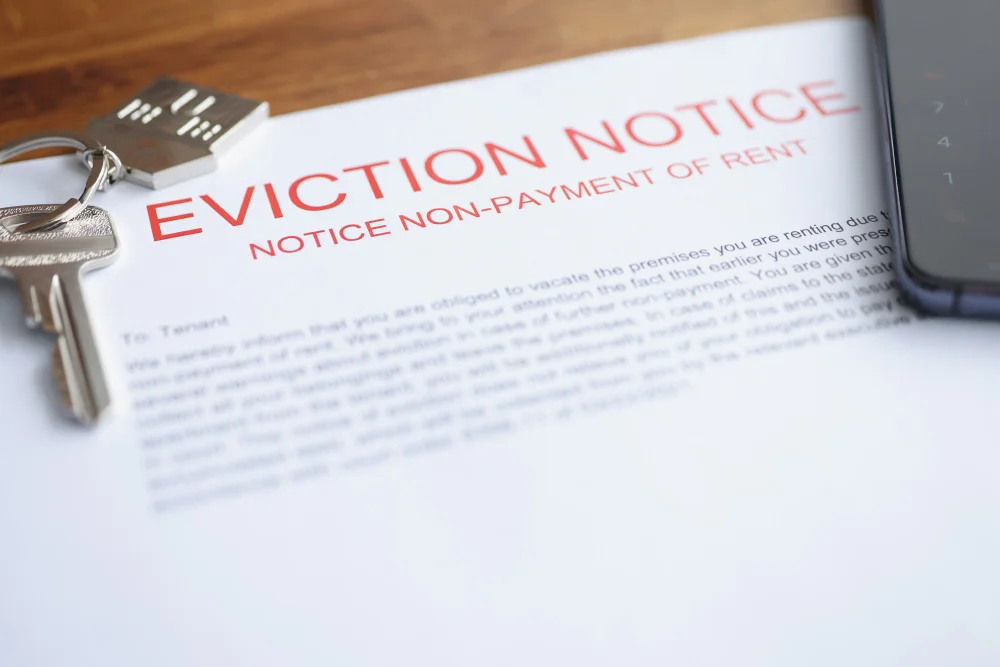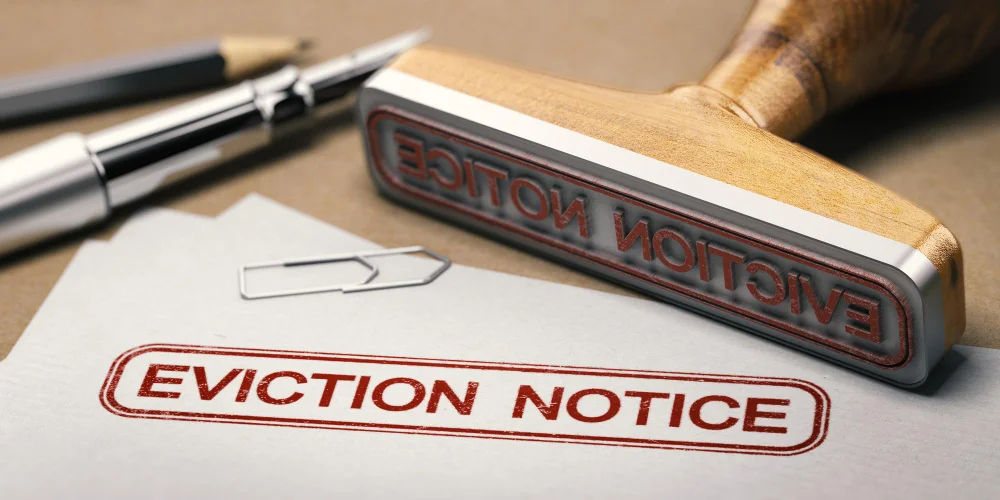Last updated on
Landlords in California must navigate a specific legal framework when they decide to evict a tenant. The eviction process involves a series of steps that must be followed in strict accordance with state law to ensure that the actions of the landlord are both legally compliant and enforceable.
A failure to adhere to these steps can result in delays, financial loss, or legal repercussions. The process begins with a proper notice to the tenant and, if necessary, progresses to legal proceedings in California courts.
Effective eviction requires an understanding of the grounds on which a tenant can be evicted, the types of notices required, and the handling of court procedures should the eviction be contested.
To evict a tenant, a landlord must first have a legitimate reason, such as non-payment of rent, violation of lease terms, or illegal conduct on the property. The initial step requires serving the tenant with an eviction notice, which must be done in a specific manner and within the time frame mandated by California law.
Key Takeaways
- The California eviction process starts with serving a proper notice to the tenant.
- Legal proceedings may follow if the tenant contests the eviction or fails to comply.
- Successful eviction in California necessitates alignment with specific legal protocols.
Legal Requirements for Eviction Notices

In California, landlords must adhere to strict procedures when issuing eviction notices to tenants to avoid legal complications. These notices must comply with state laws on notice types, service methods, and timelines.
Understanding the Notice Types
There are several types of eviction notices in California, each applicable under different circumstances. A 3-day eviction notice may be served for nonpayment of rent, violation of lease terms, or illegal activity. If the issue is curable, such as late rent, the notice allows the tenant three days to remedy the violation. For lease breaches that cannot be rectified, an unconditional notice to quit may be used.
For tenants who have resided in the property for a year or more, a 60-day notice is generally required if the landlord does not want to renew the tenancy, whereas a 30-day notice is sufficient for those who have lived in the unit for less than a year. Each notice must be clear, in writing, and contain specific information mandated by state law.
Proper Service of Notices
The service of an eviction notice in California is just as crucial as the notice itself. Landlords have options: personal service, service to a person of suitable age at the premises with follow-up mailing, or posting and mail service if the tenant is not available. Documenting the method of service is vital to ensure that the process is indisputable in case of future legal disputes.
Timeline and Deadlines for Notices
Timelines are critical in the eviction process. After the notice period expires — whether it’s 3, 30, or 60 days — the landlord may proceed with filing an eviction lawsuit if the tenant remains non-compliant. Any delay or error in serving the notices or adhering to the timeline can jeopardize the eviction proceedings. Landlords must keep meticulous records of all notices served, including the date and method of service, to support their case if it goes to court.
Proceedings in Court and Beyond

After a California landlord has served proper notice and the tenant has not complied, the legal proceedings to regain possession of the property begin. These proceedings are time-sensitive and require careful adherence to legal protocols to ensure enforceability.
Filing the Unlawful Detainer
The first step in the court process is for the landlord to file an Unlawful Detainer lawsuit in the appropriate superior court. This begins with the submission of several forms, including a Summons and a Complaint, as well as a Civil Case Cover Sheet.
Depending on the landlord’s circumstances, a Fee Waiver may also be submitted if they cannot afford the court fees. The completed paperwork must be filed with the court clerk, and a filing fee is typically required unless waived.
Tenant’s Response and Court Actions
Upon service of the Unlawful Detainer, the tenant has five days to respond if they were served in person. They can file an answer to the complaint, which may result in a trial. If the tenant disputes the allegations, a judge will set a trial date.
Both the landlord and the tenant must then present their cases. If the tenant fails to respond, the landlord can request a default judgment to proceed with the eviction without a trial. In each case, the judge’s decision or judgment is critical, determining whether the tenant must vacate the premises.
Completing the Eviction
If the court rules in favor of the landlord, a Writ of Execution is issued, which is the final court order needed for the landlord to regain possession of the property. This document authorizes the sheriff to physically remove the tenant from the rental unit. The sheriff will post a notice on the tenant’s door, giving a brief period to move out voluntarily before they return to perform the lockout.
In California, tenants may request a stay of execution, which can delay eviction, generally no more than 40 days, if specific conditions are met. However, once the stay concludes or if not granted, the tenant must leave or face forced removal by the sheriff to complete the eviction lawsuit.
The Takeaway
In the state of California, landlords must adhere to a clear set of legal procedures to evict a tenant. These include providing appropriate written notice, filling out and submitting court forms, and potentially proceeding to trial if the tenant contests the eviction. It is imperative for landlords to follow each step precisely, as outlined by state law, to avoid legal repercussions.
Assistance from legal professionals is often recommended to navigate this complex process. The adherence to due process not only protects the rights of the tenant but also upholds the landlord’s ability to regain possession of their property legally.
Recap:




